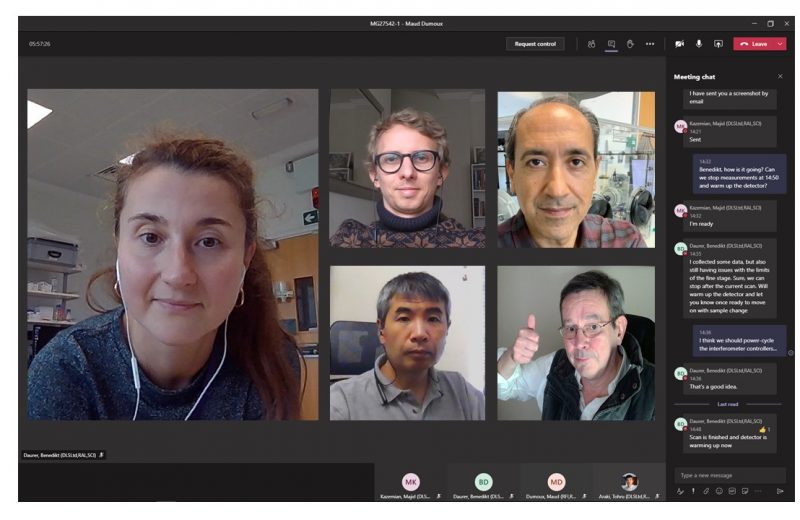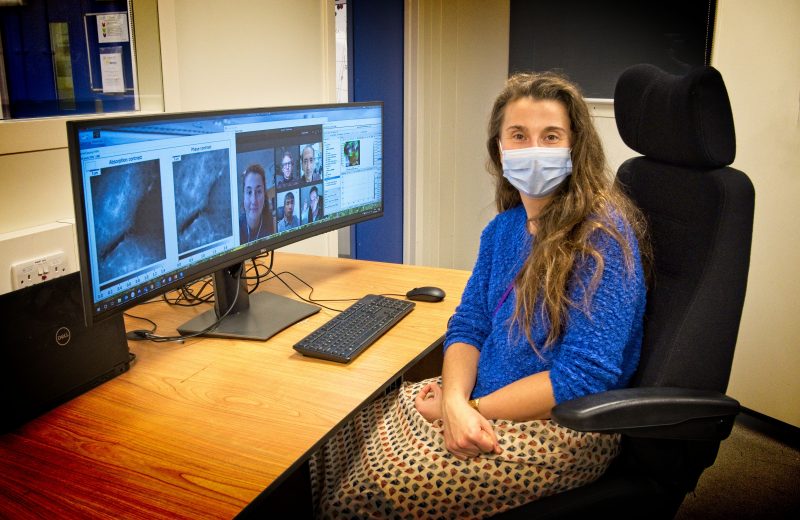A key milestone has recently been achieved at the soft X-ray spectro- and tomo-ptychography branchline (J08) at Diamond. It is celebrating the success of its first user from The Rosalind Franklin Institute (The Franklin). Using the new technologies, the team was able to acquire over 200 ptychographic reconstructions in just two days on challenging biological samples. The advantage of ptychography is that the spatial resolution achieved can be higher than that achieved with conventional scanning X-ray microscopy techniques. This is important for better understanding the chemical interaction of organic and inorganic matter on nanoscopic length scales for a broad range of scientific areas including biology, biogeochemistry, environmental and earth science, and materials science.

Principal Beamline Scientist Burkhard Kaulich, who led the project to design, construct and commission the new instrument, said: “On behalf of all contributors to the J08 project, we are very excited to announce that we have reached the landmark of our first User event with Maud Dumoux from The Franklin. We acquired more than 200 ptychographic reconstructions in just two days on Chlamydiae infected cells, most of them with the online processing chain of visualising preliminary reconstructions only a few minutes after data acquisition.
We are now looking forward to welcoming further users. However, we are all on a steep learning curve, and it will take us another two years to optimise the instrument including cryogenic cooling of samples and tomography.”
During the J08 first User experiment, Maud Dumoux from The Franklin aimed at imaging and analysing the iron distribution in Chlamydiae infected cells. Chlamydiae are intracellular strict bacteria and are the agent of the first cause of acquired blindness worldwide and the leading cause of female sterility in developed countries. Chlamydiae are also a burden for farming and animals as it is responsible for abortion for livestock and is a major factor in the declining numbers of Koalas in Australia. It is known that Chlamydiae are sensitive to iron levels. Thus the interest in analysing the iron distribution on nanoscopic scales.
Maud Dumoux, said: “We are so pleased to be the first users of this beamline, and we are really excited by the results we have obtained so far. J08 is a unique and promising beamline that will increase our understanding of host-pathogen interactions using probe free imaging approaches, and we look forward to combining the knowledge from these experiments with other techniques to obtain a full picture of this important pathogen.”

The team plans to open a commissioning call for potential users of this new facility by late November, where room-temperature ptychographic 2D imaging and spectro-ptychography will be offered.
Director of Physical Sciences at Diamond, Laurent Chapon, concluded: “I would like to extend my congratulations to the team and all people involved with the project. This is a very important milestone for both science and Diamond, and it is an impressive achievement given the difficulties caused by the pandemic.”